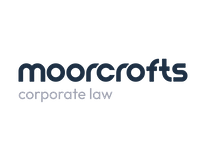How to set up an Employee Ownership Trust (EOT)
An Employee Ownership Trust (EOT) is a structure whereby employees own shares in their employing company via a trust. EOTs can create high employee engagement, an improved work culture and superior performance when compared to traditional company models.
What are the advantages of using an EOT structure?
A key advantage for shareholders selling their shares (the “Sellers”) to an EOT is that, provided that they sell a controlling interest (i.e. more than 50% of the shares in the company), the sale will be free of any capital gains tax. Once the EOT is set up, bonuses of up to £3,600 can be paid annually to employees free of income tax (although NICs will still be payable).
A sale to an EOT gives greater flexibility for shareholders because they have the option not to sell, as long as the EOT will ultimately hold over 50% of the shares in the company. A significant benefit for employees is that an EOT allows them to purchase the shares without having to raise cash. This might appeal to employees who can’t afford a management buyout, but still want to have greater control over the company.
How to set up an EOT
There are various considerations for all parties and legal procedures to follow when setting up an EOT, but a brief summary of the process is as follows:
- A qualifying EOT will be set up with a chosen trustee. This will usually be a Newco, but another option would be to engage a professional trustee.
- The Sellers will sell between 50% and 100% of their shares to the trustee of the EOT under a share purchase agreement.
- The EOT will usually pay for the shares with proceeds of a loan from the Sellers (often in the form of loan notes) and/or with bank financing.
- If the Sellers have provided loan notes, these will be paid back in instalments and any bank financing will usually be repaid using the profits from the company.
Qualifying conditions for an EOT
There are strict conditions to adhere to when setting up an EOT in order to receive the generous tax benefits available. There are five key conditions to meet to ensure a qualifying sale to an EOT:
- The company whose shares are to be transferred to the EOT must be a trading company or the principal company of a trading group.
- The trustees of the EOT must ensure that the shares are dealt with for the benefit of all eligible employees on the same terms.
- The trustees must retain, on an ongoing basis, a controlling interest in the company (i.e. more than 50% of the shares).
- The number of continuing shareholders (and any other 5% participators) who are directors or employees (and any persons connected with such employees or directors) must not exceed 40% of the total number of employees of the company or group.
- The trustees must generally deal with the shares for the benefit of all eligible employees on the same terms (although there may be some distinction between employees on the basis of remuneration, length of service and hours worked).
There are a great many benefits to using an EOT structure, but its creation must be executed correctly to be a valid EOT. If you are interested in setting up an EOT as part of exit or succession planning for your business, please get in touch with our corporate team and we would be happy to help.



